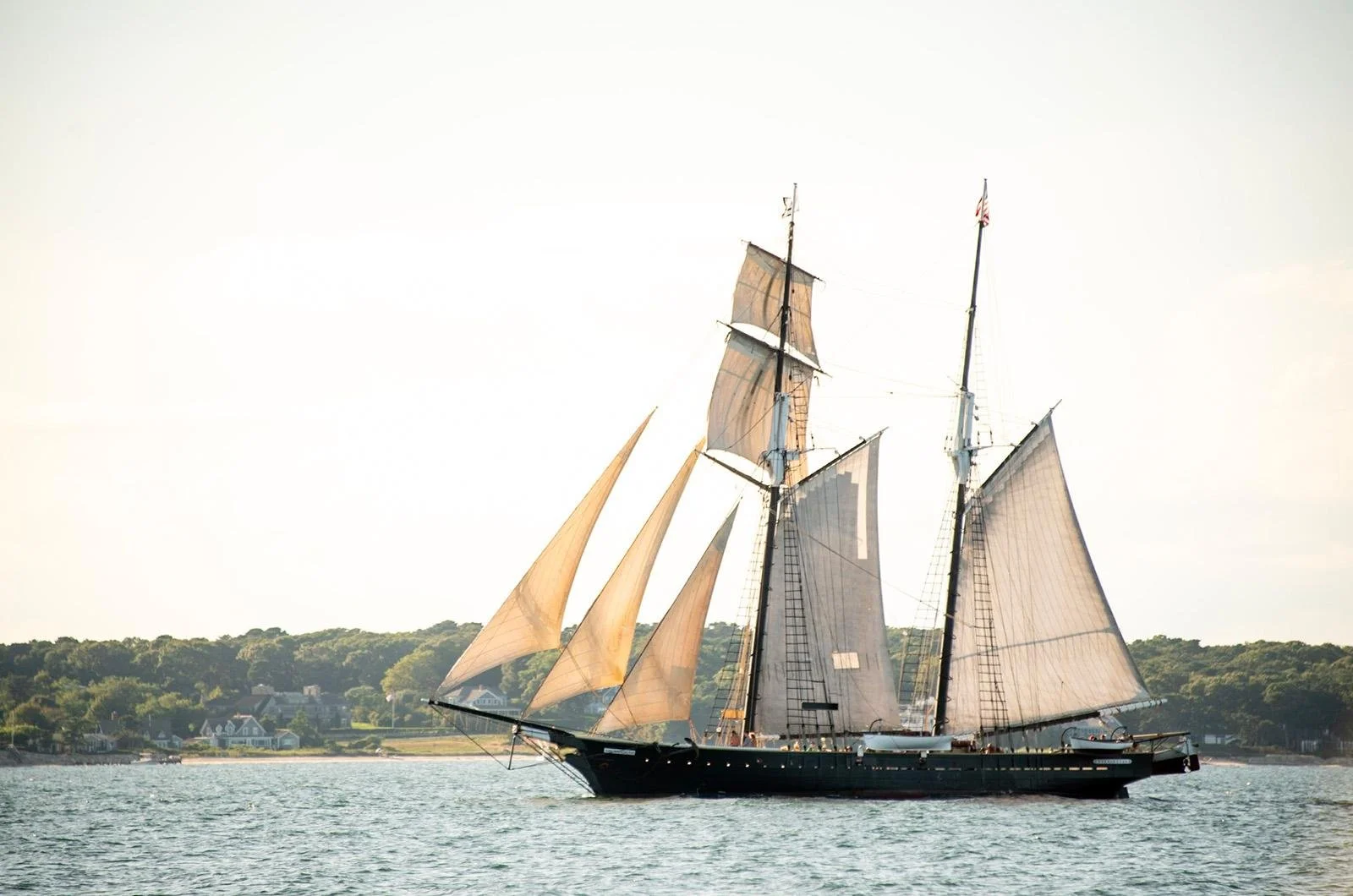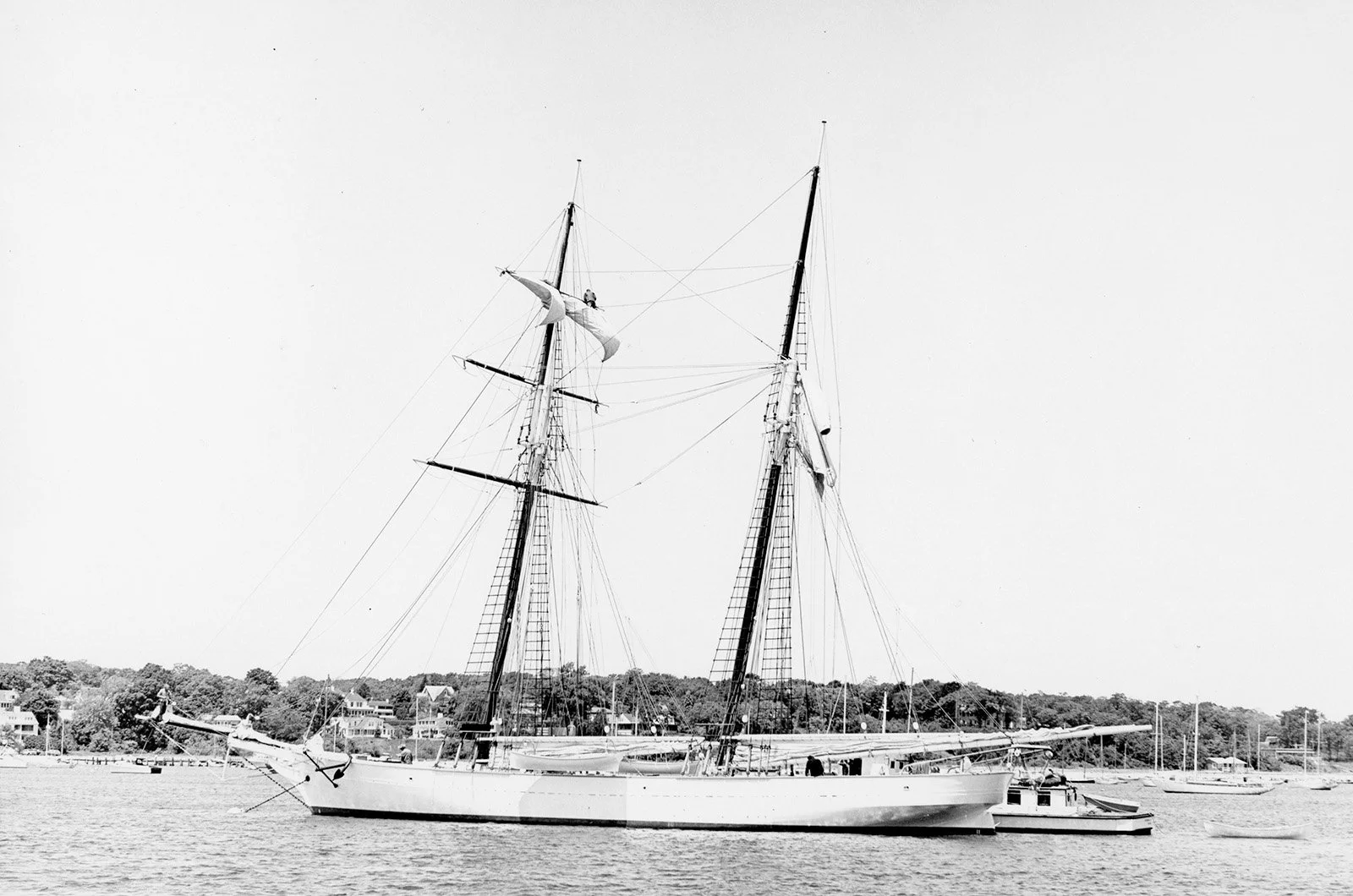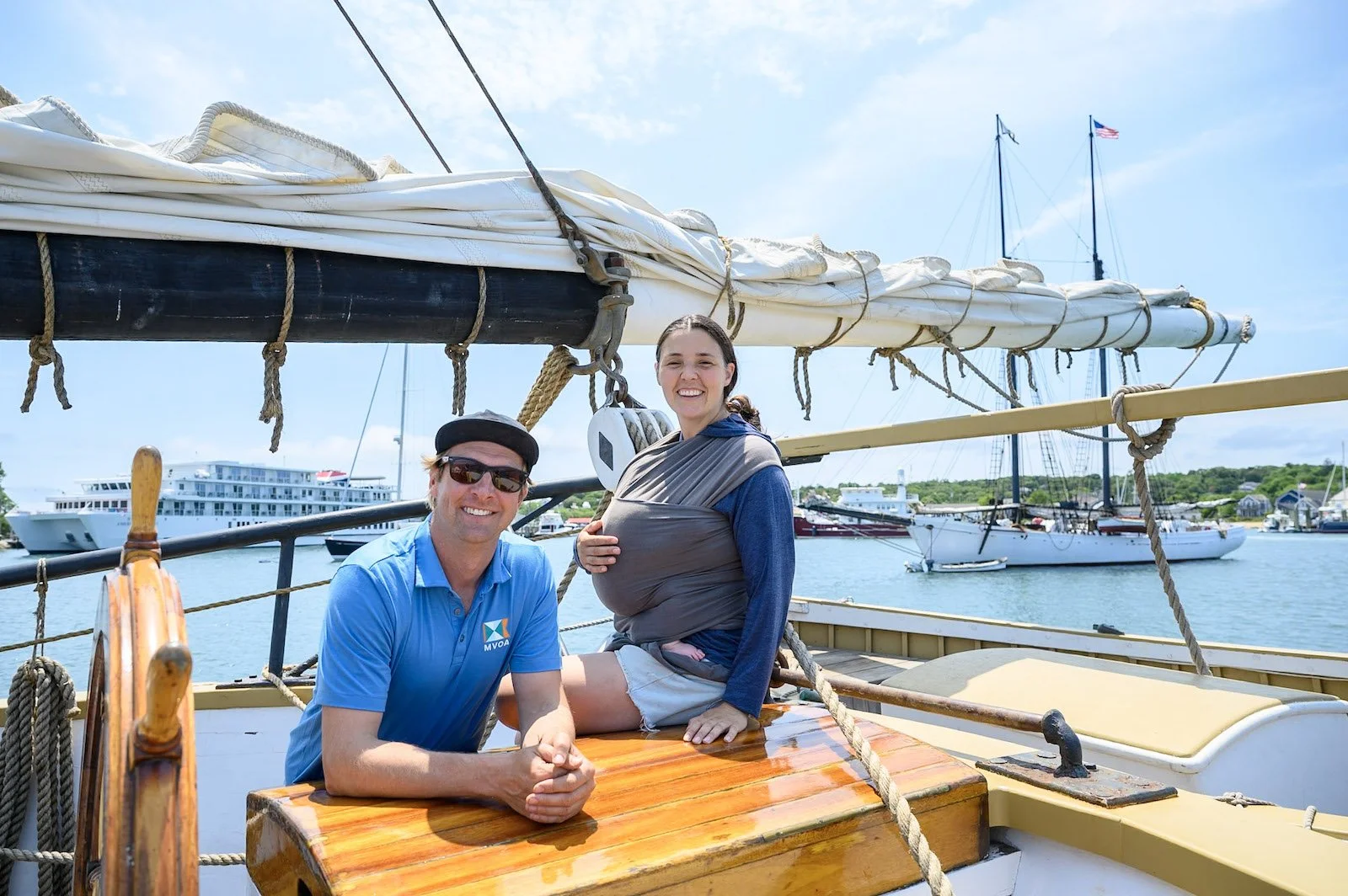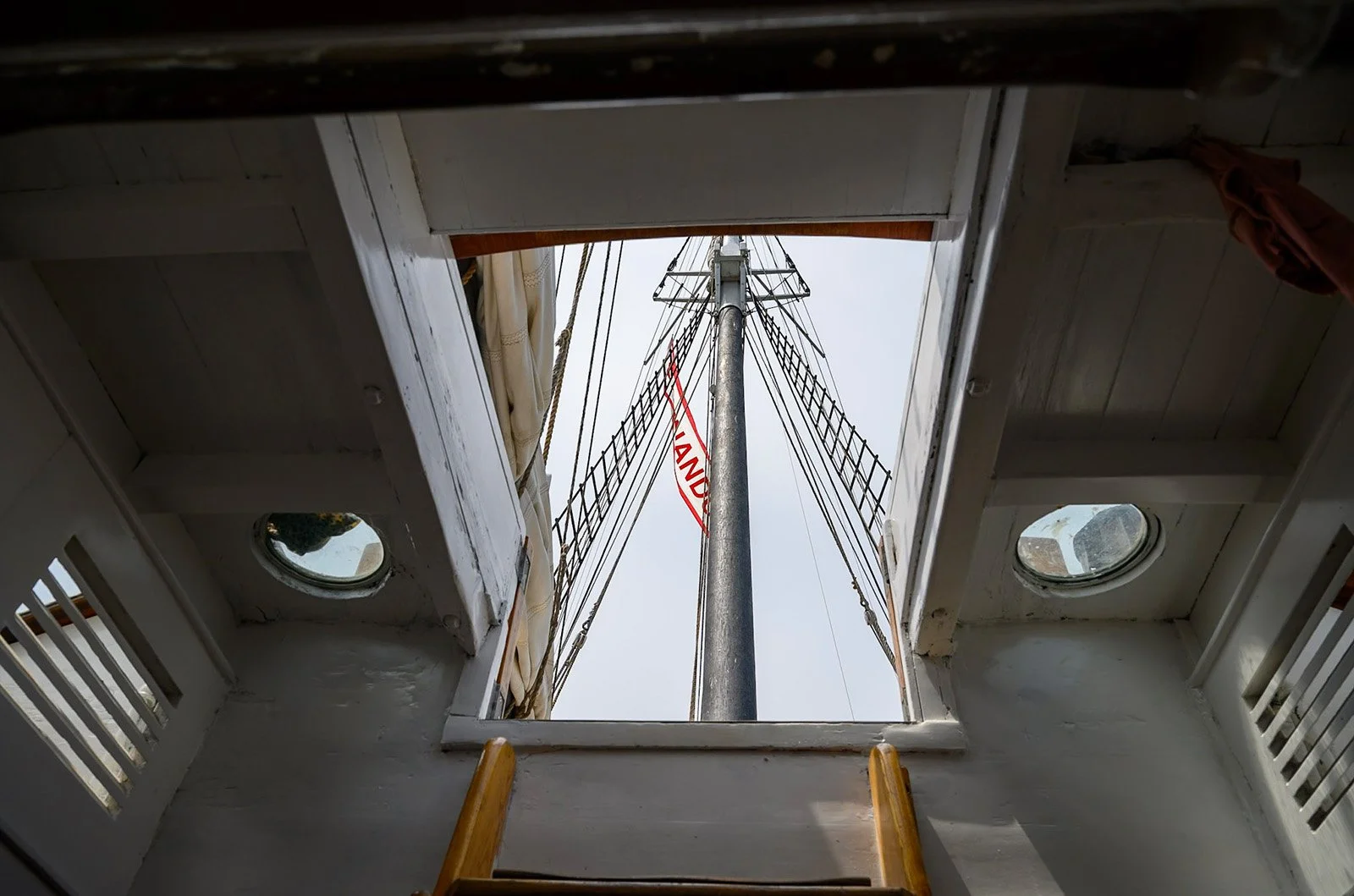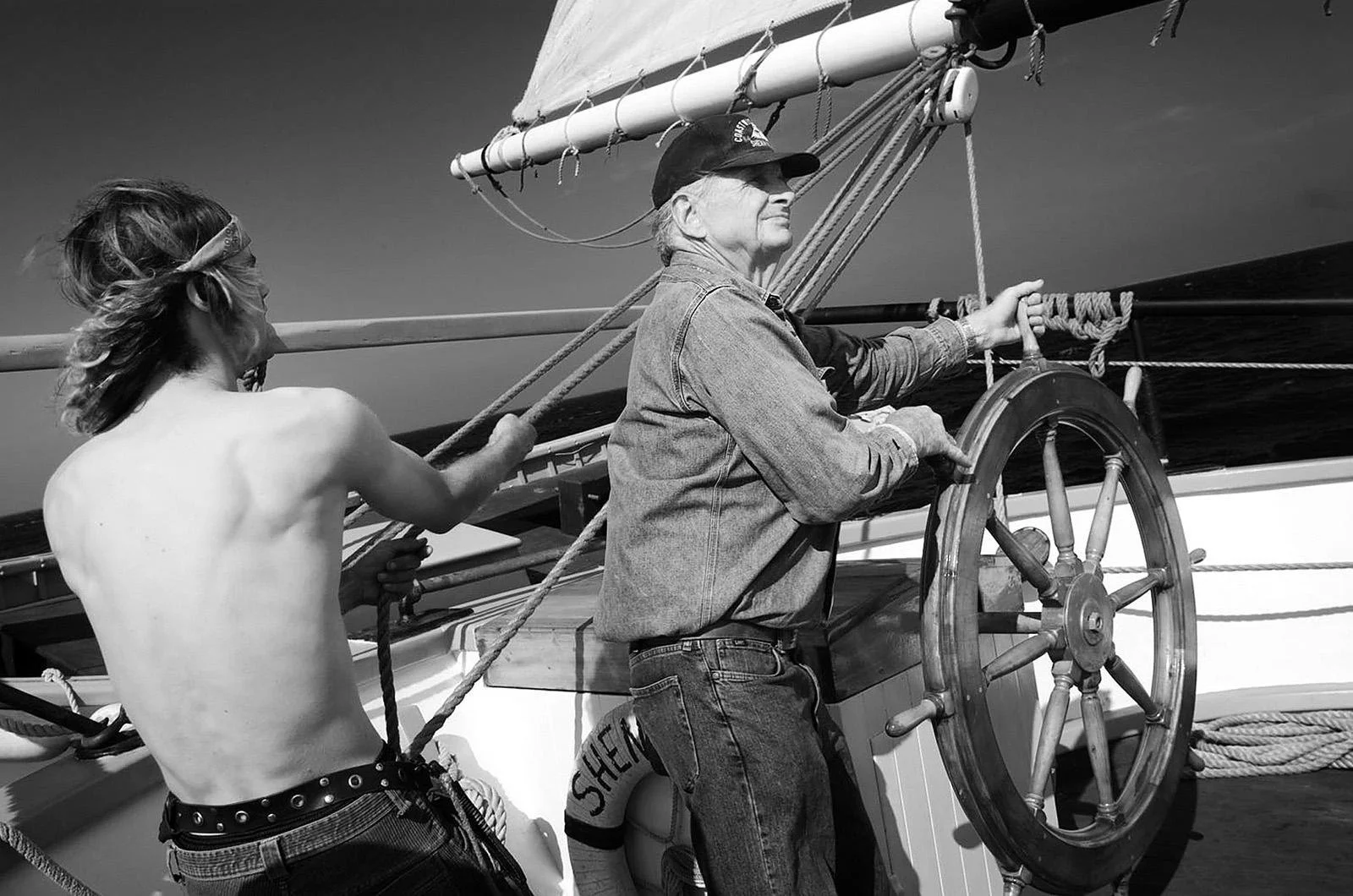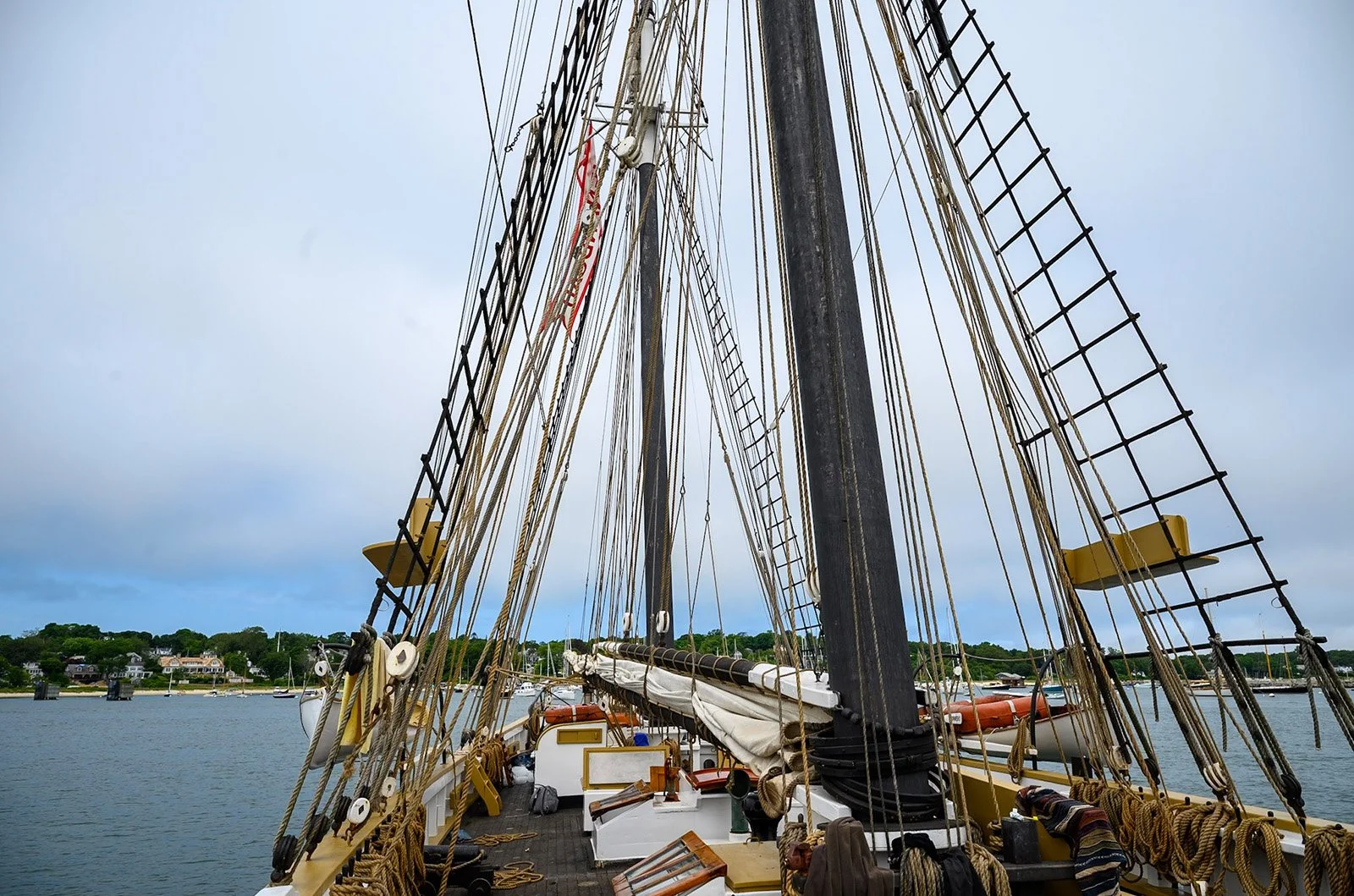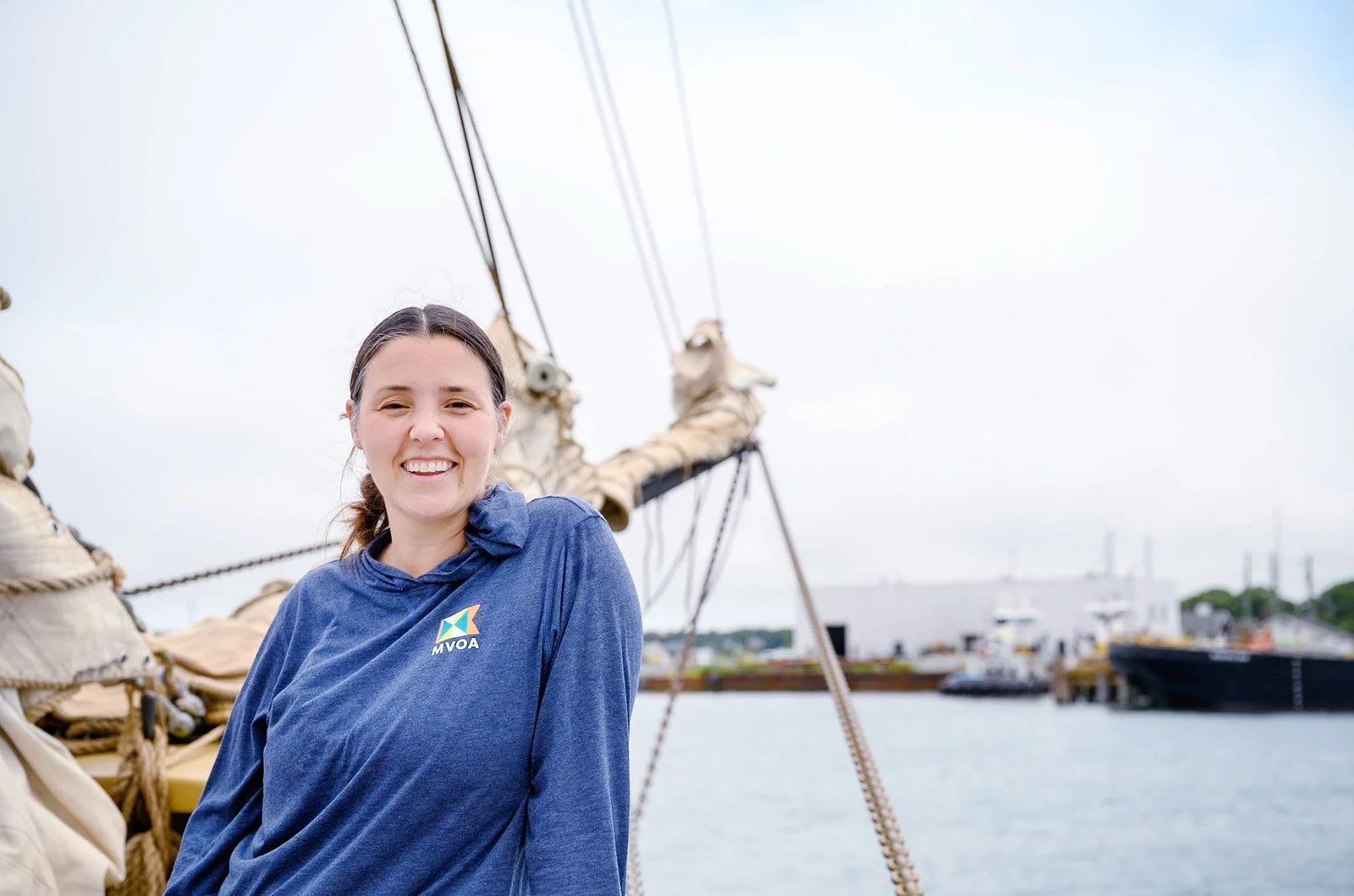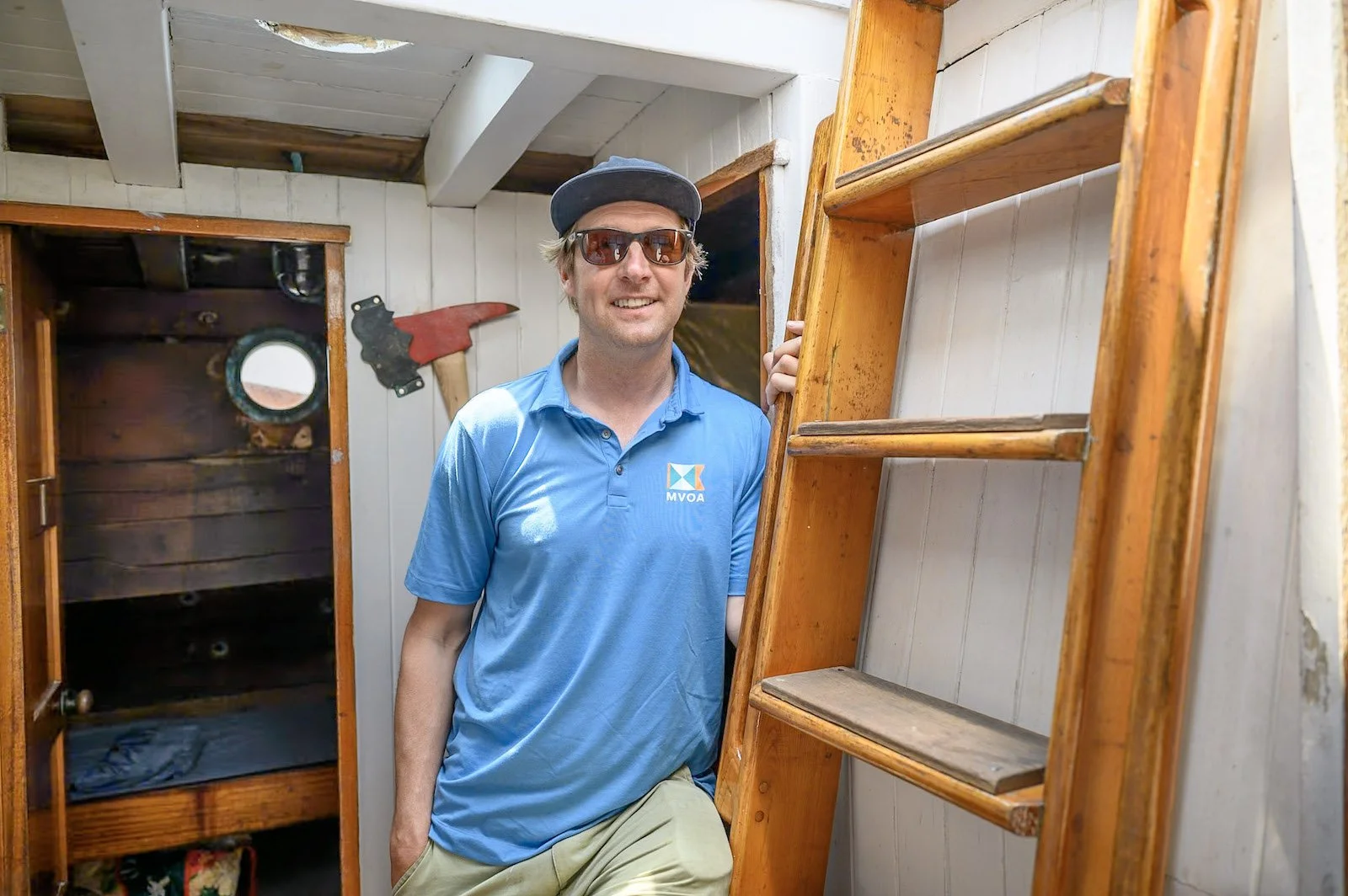Vineyard Gazette
Shenandoah sailing in 2019. It first sailed into the Vineyard Haven harbor in 1964.
Addison Antonoff Tuesday, July 15, 2025 - 2:25pm
A staple on Vineyard waters for 63 years, the legendary schooner Shenandoah will sail her last season next summer.
Martha’s Vineyard Ocean Academy, the educational nonprofit that currently owns and operates Shenandoah, announced this week that the final voyage will take place at the end of the 2026 summer season.
The decision to retire the boat began after the spring haul-out and a U.S. Coast Guard inspection that showed continued repairs and upkeep will no longer be feasible, according to Ian Ridgeway and Casey Blum, the sailing captains who co-founded Martha’s Vineyard Ocean Academy.
In the harbor in 1970. — Glenn Provost
“It’s hard to swallow that. I grew up on the Shenandoah,” Mr. Ridgeway said on Saturday while standing on deck. “I have spent over 25 summers on this boat, and before that, tens of thousands of people sailed on this boat, and crew members whose lives were changed.”
Mr. Ridgeway and Ms. Blum said they don’t know yet what will happen to the schooner after next summer but they are considering various options, including a conversion to an onshore attraction.
“An ideal scenario would be to preserve the existing hull and open it up to the public,” Ms. Blum said.
The organization is also actively fundraising to build a new boat, Shenandoah II, in order to continue the nonprofit’s maritime educational programming. Ms. Blum said they are interested in using as much of the original ship, such as the oil lamps and blocks, as possible in the new schooner.
Ian Ridgeway and Casey Blum and their baby Dune Ridgeway (tucked inside his sling), all aboard Shenandoah.
Shenandoah first arrived in Vineyard Haven harbor in 1964, under the leadership of Capt. Robert Douglas, founder of Black Dog Tall Ships and the Black Dog apparel brand, who died in April at the age of 93.
Mr. Douglas designed the schooner, which is 108 feet at the rail and modeled after the Joe Lane, a revenue cutter launched in 1849. It was built at the Harvey Gamage shipyard in South Bristol, Me.
Philip Hale, former owner of Martha’s Vineyard Shipyard and the current treasurer for Martha’s Vineyard Ocean Academy, said he watched the Shenandoah sail into the Vineyard Haven harbor for the first time on July 15, 1964.
“I was 10 years old and a member of the Vineyard Haven Yacht Club. They took us all down to the dock,” he said in an interview with the Gazette this week. “And there it was, something that the harbor hadn’t seen in literally 100 years.”
The view from below decks. — Jeanna Shepard
Shenandoah resembles a mid 19th-century sailing ship. According to Mr. Ridgeway, Mr. Douglas made every effort to keep its operations and equipment as similar as possible to its historic origins. It was the second commercial sailing ship built without an engine in the United States since 1921.
Matthew Stackpole, an advisor for the Martha’s Vineyard Ocean Academy, served on the Shenandoah in its early years. He said he began as a deckhand, then worked as a boatswain before becoming the ship’s mate.
“I had some background in terms of historic vessels and sailing, but it was the real thing,” Mr. Stackpole said. “To be able to experience a traditional way of sailing and also the importance of the crew and how we work together...it was a great tradition about doing things right, and it continued on for many, many people.”
In the early days, Shenandoah ran chartered trips for people of all ages, but over time, Mr. Douglas began to focus on youth, arranging for groups of students to live onboard during the summer, including a group of mariner scouts from Illinois who returned for multiple years. Shenandoah’s deck, rigging cabins and galley now serve as a classroom for school children from the Vineyard and beyond.
Capt. Robert Douglas at the wheel of Shenandoah. — Alison Shaw
“Bob used to say ‘give me a bunch of kids, the adults have all been ruined already,’” Mr. Stackpole said.
Mr. Douglas wrote about his experiences on the Shenandoah in the winter 1986-1987 edition of Sea History magazine.
“One of my greatest satisfactions lies in seeing young men sign aboard in the most humble crew position and climb through the ranks...and seeing them go on and wring more water out of their socks than I have sailed on,” he wrote.
Second to watching his crew rise through the ranks, he prized giving children the experience of sailing on the Shenandoah.
Shenandoah has been taking kids out all summer long for decades. — Jeanna Shepard
“Whether or not they ever set foot abroad a sailing vessel again, a six-day experience out of earshot of radio and television, being involved with wind direction, velocity, visibility and tidal flow — joining in together to get large sails aloft, and a big anchor broken out, I have found, may well be a significant moment in their experience,” Mr. Douglas wrote.
In the 1990s, Mr. Douglas added Alabama, another schooner, to his fleet of floating classrooms, which is where Mr. Ridgeway and Ms. Blum met. They first sailed on Alabama as students and worked their way up through the crew to become captains.
“I did a trip when I was nine and I loved it,” Ms. Blum said. “I came back every summer until I was old enough to work on board. I started working as a deckhand and then trained to be a first mate and then a captain. Ian and I have been involved with the program since the ‘90s in some capacity.”
In 2020, Mr. Douglas donated Shenandoah to the Martha’s Vineyard Ocean Academy, formerly known as FUEL, and Mr. Ridgeway has captained the schooner for the last five summers. During voyages, he lives in the captain’s quarters, accompanied by Mr. Douglas’ logs. Each entry begins with the words “the day commenced” and ends with “and so was this day.”
Casey first stepped on board Shenandoah as a school kid. — Jeanna Shepard
“I read these logs at the end of the day to gain from the experience,” Mr. Ridgeway said. “It’s all documented, and there’s a lot to learn from the triumphs and mistakes.”
The captain’s room is full of markers of the boat’s history, including the Douglas family crest and a sea chest full of photos from past voyages. The sea chest also holds many thank you letters sent to Mr. Douglas.
“Our family would like to thank you and your staff for generously sharing your knowledge of the sea and ship that sails upon her,” a letter reads. “We are very grateful for returning the boys back safe and sound to us, and for the new appreciation of life’s experiences that you have taught them, and the value of the sea. The spirit of the Shenandoah will remain with them for a long time.”
Over the course of a week, Mr. Ridgeway said the students discover new levels of confidence.
Ian has been captaining Shenandoah since 2020. — Jeanna Shepard
“A big part of the experience for students is jumping into the water. They love swimming. They love jumping from the rail because it’s kind of high,” he said. “A lot of kids in the week will work up to jumping off the jibboom....They feel really proud afterwards.”
Ms. Blum, who is a licensed social worker in addition to a captain, said that while the program is built around maritime skills, it also teaches students leadership and communication skills.
“Kids really need authentic experiences these days, especially with the digital world that they are immersed in. I think they are searching for real meaning, and the connections that kids build on Shenandoah are very real,” she said.
Trips on the Shenandoah have become tradition for many children on the Island, including the fourth and fifth grade students from the Chilmark School, who spend the first full week of the school year on board.
Rebekah Thomson, the outing program coordinator at the Chilmark school, said that the change in students after the journey is remarkable.
“I swear, every single one comes back standing taller than they did when they left,” Ms. Thomson said. “Even the ones who were super nervous....Everybody comes back feeling extremely empowered and way more connected with their classmates.”
Shenandoah has also been home to youth from around the country and across the world. Last summer, the Martha’s Vineyard Ocean Academy hosted 10 students from Maine, all of whom had come to the United States as refugees from Angola, Gabon and the Democratic Republic of Congo.
A nautical life, true to its roots.
Although Shenandoah will end its run next summer, Ms. Blum and Mr. Ridgeway plan to continue their mission to educate children on Shenandoah II.
“Captain Douglas was a mentor to both of us personally, but also he was an advisor to Martha’s Vineyard Ocean Academy,” Ms. Blum said. “He spent hours and hours with Ian pouring over the plans and perfecting the design so that this next ship would carry on Shenandoah’s legacy.”
Martha’s Vineyard Ocean Academy has already raised $3.25 million for the new boat, including a grant from MV Youth, and are looking to raise an additional $6.6 million.
Ms. Blum and Mr. Ridgeway said they want to keep the program going even if there is an interim period between Shenandoah’s retirement and the completion of the next boat. Ms. Blum said they would consider chartering another vessel to fill in the gap.
No matter what the future holds, the past will inform it.
“In a sense, it’s passing the mantle on to another generation,” Mr. Stackpole said. “Shenandoah has had a huge impact on many, many people, and that will never go away.”

